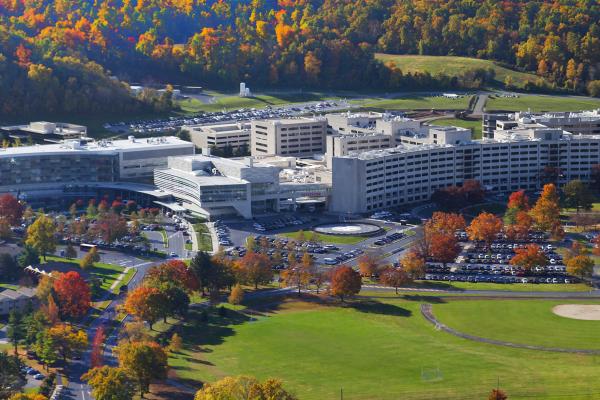Foot and Ankle Deformities
Hindfoot deformities are most common in children with neuromuscular disorders, such as cerebral palsy and spinal muscular atrophy. Patients with hindfoot deformities have protruding heels, high arches and, often, irregular gait. In adults, acquired flat foot deformity and arthritis of the foot are handled via various procedures that restore the anatomy, and help to relieve pain and improve gait.
The team of orthopaedic surgeons at Penn State Health provides comprehensive, multidisciplinary hindfoot deformity correction options. Nonsurgical hindfoot deformity treatments include arch supports and special shoe modifications. However, this condition can be progressive, so many patients will need surgery. We will work with your health care team to determine the best timing and plan for surgery.
Symptoms, Diagnosis and Outlook
Symptoms of hindfoot deformity include:
- Ankle instability/frequent sprains
- Foot muscle weakness
- High arch
- Protruding heel
- Tingling or loss of sensation in the feet
Our orthopaedic specialists work together through our dedicated Penn State Bone and Joint Institute. They provide you with multidisciplinary, tailored care and state-of-the-art treatments and technologies. All physicians are fellowship trained and subspecialize in additional areas of orthopaedics.
Experts in Care
Meet our doctors, view their profiles and select the one that’s right for you.
Why Choose Penn State Health for Care
Top-Ranked by U.S. News & World Report
Penn State Health includes the Milton S. Hershey Medical Center, ranked as one of the best orthopedic providers in the country by U.S. News & World Report. This honor was earned because our doctors consistently deliver exceptional patient care and outcomes through their commitment to advanced treatments, translational research and provider training.
Coordinated, Specialized Care Through a Dedicated Institute
Our orthopaedic specialists work together through our dedicated Penn State Bone and Joint Institute. There, they focus on providing you with multidisciplinary, tailored care and state-of-the-art treatments and technologies. This produces the highest-quality patient outcomes. All physicians at the institute are fellowship-trained and subspecialize in additional niche areas of orthopaedics, including arthritis care and joint arthroplasty (joint replacement surgery).
Designated as a Blue Distinction® Center
Penn State Bone and Joint Institute is a Blue Distinction Center for Knee and Hip Replacement. This superior designation from BlueCross BlueShield is only given to health care facilities and providers that stand out for their expertise in delivering specialty knee and hip replacement care. Our surgeons specialize in a range of pain-relieving procedures, including partial knee replacement, total joint arthroplasty, joint preservation surgery and complex revision surgery. They perform more than 1,000 joint replacement procedures every year.
Confidence in Treatment Through Education
We developed a special joint replacement education website just for patients undergoing joint arthroplasty. The website takes you step by step through the joint replacement process. From things to consider before choosing surgery to recovery after surgery, you’ll find the information you need to help you feel confident in your decision to undergo joint replacement.
Advancing Orthopaedic Medicine Through Research
The doctors and researchers in our Center for Orthopaedic Research and Translational Science at the Milton S. Hershey Medical Center are committed to advancing our field through scientific discovery and education. As the only academic medical center in central Pennsylvania, Hershey Medical Center is a national leader in research, in partnership with Penn State College of Medicine, and on the leading edge of new treatment options, including clinical trials.
Convenient Locations
Find the care your family needs, close to home, at one of our many locations throughout central Pennsylvania.
Find a location near you


